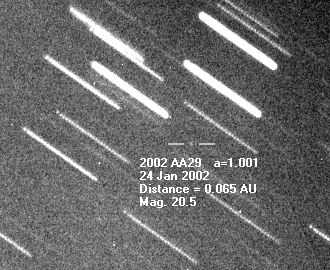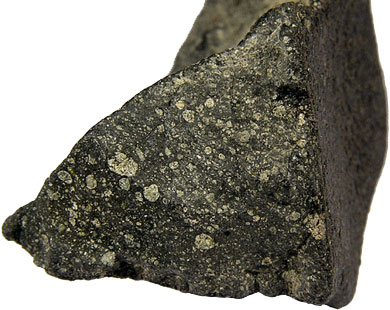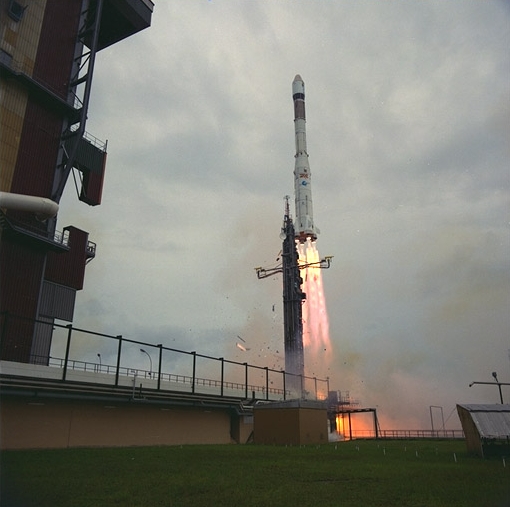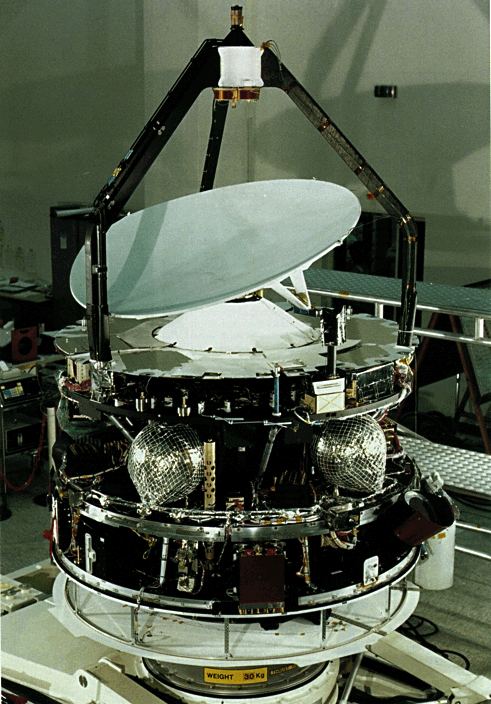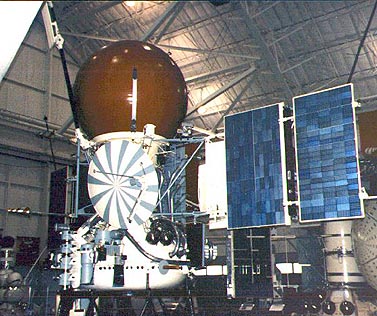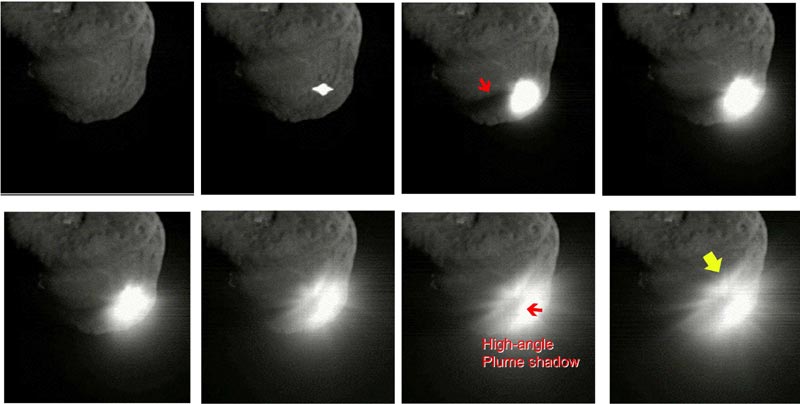A little place and a big tease:
This is only a short post, as its about a place that is firstly extremely tiny, and secondly mostly interesting for what we don't know about it : The near Earth asteroid 2002 AA29[1]. This is a tiny little chunk of space stuff, as modest in its brightness as its size (magnitude 20.4 at its closest to earth). What could set apart this airless island rock that is at most 100 meters across and perhaps a little as 50?
Image above: The dot in the cross hairs is 2002 AA29, part of Earths co-orbital family. Image courtesy of P.Birtwhistle.
From our frame of reference these things combine so it looks like it is following a weird U shaped spiral around us, coming close but never quite passing us. Close approaches are every 95 years; in its own very slow way the little rock is teasing us.
Video above: 2002 AA29's odd orbital path, seen from our frame of reference. Courtesy of the University of Western Ontario.
The orbit is very very circular, more so than Earths in fact. Orbital dynamics studies tell us that this means it may have been co-orbital with Earth for a very very long time- since the time the Earth formed perhaps.
We are almost totally ignorant about its surface, as it is much to small to ever appear as more than a dot. However we can infer that it cannot be made of volatile material, as that would evaporate giving off a detectable tail of gas. In that regard this seems a very well behaved little speck of presence in the vastness.
We do know some things, although they don't add up very well: The gigantic Arecibo radio telescope[4] bounced signals off it, and what it found[5] was a bit confusing:
2002 AA29 has an unusually weak radar echo, meaning either its actually even smaller than we think and extremely reflective to light, or it absorbs radio waves much better than it should. Either way, its not made of the normal shopping list of asteroid materials.
Arecibo also found it to be spinning roughly every 33 minutes or less, which is fast enough that if it were anything other than a solid chunk of material it would fly apart. Yet its surface density seems low, which would usually suggest it was a rubble pile filled with voids.
So it's small, it follows the Earth and may have done for a long time, its made of rock, or at least not ices, and its not made of the usual asteroid material. It's one single lump of stuff, not a pile of bits, although its not as dense as it should be. It seems that this cheeky little speck is laughing at us- teasing us with more than just a peek-a-boo orbit. What does the evidence suggest?
We really might have a cheeky relative on our hands: One of the most plausible explanations is that 2002 AA29 is related to Earth [6] or our Moon. It could be an exceptionally large fragment sent screaming into space by a monstrous asteroid impact. That would make it an interesting little curiosity, one that could educate us some more on giant impacts, and even the state of our Earth or Moon in a long lost epoch. But there is a similar, even more violent, possibility. One that goes back to before the Earth and Moon as we know them even existed:
To J.Gott[7] and E. Belbruno[8] the anomalies surrounding this little rock suggest that it just might be a fragment from a collision [9] between the primordial Earth, and a long lost world called Theia. Theia was, so goes the theory, a Mars sized protoplanet that smacked into Earth 4.5 billion years back. The unimaginable heat this event caused not only turned the whole surface of the Earth to magma, it blew enough material into orbit to form a whole giddy new world [10]: Earths Moon.
This tiny, tantalisingly enigmatic, little rock is definitely unusual- and worth investigating- but perhaps it goes further than that; perhaps modest little 2002 AA29 is a window directly onto the last really huge event in the construction of our Earth. And that makes it well worth a blog post.
How do we know about 2002 AA29?
2002 AA29 was discovered in 2002 by the LINEAR project[11]. Once it's unusual orbit was established some follow up observations were done by Arecibo, and that's it really. LIINEAR employs the specially built GEODSS[12] telescope as part of an automated survey to track near Earth objects. However we do know of some other co-orbital asteroids, like 3753 Cruinthne[13], and can infer and guess things about 2002 AA29 by looking at them as a group.

Image above: The LINEAR projects GEODSS ( Ground Based Electro Optical Deep Space Surveillience) telescope under construction. Image courtesy of NASA.

Image above: The GEODSS telescope in its observatory on Kwejalein atoll Image Courtesy of ESA.
List of links:
[1]www.space.com/scienceastronomy/earth_asteroid_021021.html
[2]http://space.wikia.com/wiki/Orbital_resonance
[3]http://science.nasa.gov/science-news/science-at-nasa/2006/09jun_moonlets/
[4]http://www.naic.edu/
[5]http://www.sciencedirect.com/science?_ob=ArticleURL&_udi=B6WGF-49V1DPH-6&_user=10&_coverDate=12%2F31%2F2003&_rdoc=1&_fmt=high&_orig=search&_origin=search&_sort=d&_docanchor=&view=c&_searchStrId=1477638702&_rerunOrigin=google&_acct=C000050221&_version=1&_urlVersion=0&_userid=10&md5=8d6888fa09c240c71548eb27d5f2f7c5&searchtype=a
[6]http://www.lpi.usra.edu/meetings/lpsc2004/pdf/1565.pdf
[7]http://www.princeton.edu/astro/people/faculty/jrg/
[8]http://www.edbelbruno.com/home.html
[9]http://iopscience.iop.org/1538-3881/129/3/1724/204215.text.html
[10]http://www.es.ucl.ac.uk/research/planetary/undergraduate/bugiolacchi/moonf.htm
[11]http://www.ll.mit.edu/mission/space/linear/
[12]http://space.au.af.mil/factsheets/geodss.htm
[13]http://www.astro.uwo.ca/~wiegert/3753/3753.html
